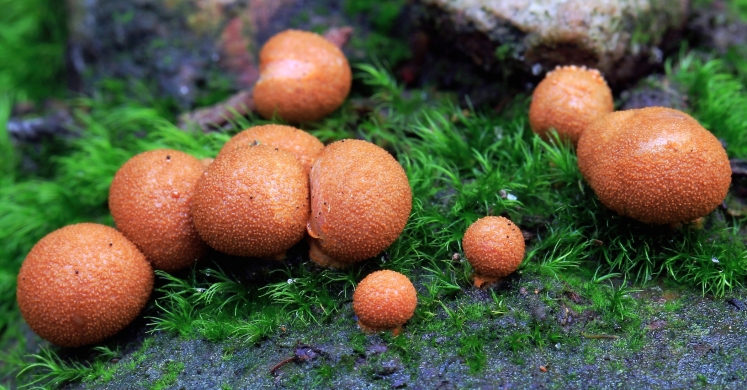Blog

#bioPGH Blog: Slime Molds
 A resource of Biophilia: Pittsburgh, #bioPGH is a weekly blog and social media series that aims to encourage both children and adults to reconnect with nature and enjoy what each of our distinctive seasons has to offer. From the best times to plant seasonal flora and enjoy their peak blooms, to astronomical events and creatures to keep an eye and ear out for, Phipps will keep you in the know with what’s going on in our environment!
A resource of Biophilia: Pittsburgh, #bioPGH is a weekly blog and social media series that aims to encourage both children and adults to reconnect with nature and enjoy what each of our distinctive seasons has to offer. From the best times to plant seasonal flora and enjoy their peak blooms, to astronomical events and creatures to keep an eye and ear out for, Phipps will keep you in the know with what’s going on in our environment!
When you think of slime molds, do you imagine a bright green oozing blob in a science fiction movie? Many people would recoil at the image, but slime molds are fascinating organisms and scientists still debate what they truly are.
Slime molds range from the gross (Fuligo septica, the “dog vomit” slime mold, which looks a lot like its namesake, to the beautiful (the raspberry slime mold (Tubifera ferruginosa) indeed looks like a mass of ripe red raspberries growing out of a log), to the just plain weird (Lycogala epidendrum, the wolf’s milk slime, are bright pink pillowy blobs that if popped, exude a pink milky fluid that contain microscopic spores).
Scientists originally classified slime molds within the kingdom Fungi, but recent studies show that they remain a complex group that for convenience are considered part of the kingdom Protista. There are several groups of slime molds, but those visible to the naked eye, and thus most commonly encountered are the Myxomycetes, the plasmodial slime molds.
Slime molds share a common life cycle and it’s creepy, literally and figuratively. During the plasmodial stage, the glistening slime mold mass crawls across the leaf litter or log, sometimes at a rate of an inch per hour, eating bacteria and growing. In this stage there are no cell walls, just a cell membrane to keep everything together; it is the motion of the protoplasm, the colony of amoeba-like cells that keeps the mass moving. (How’s that for teamwork?)
Connecting to the Outdoors Tip: Parks in Pittsburgh and western Pennsylvania are great places to find slime molds. These organisms are most diverse in temperate climates and can be found in woodlands, on dead logs or tree trunks. When you’re in the forest, keep your eyes peeled — that used bubblegum on a log might actually be a slime mold. Many slime molds are best viewed with a magnifying lens, so make sure to carry one with you on your foray.
You can even find slime molds around your own home or garden, perhaps on mulch or leaf litter in a gutter. Recently at our Bioblitz, members of the Western Pennsylvania Mushroom Club found several slime mold species in nearby Panther Hollow.
Please do not use this article for identifying fungi and fungi-like species — the best way to learn proper mushroom identification is to accompany a trained mycologist. The general edibility of slime molds isn’t well known; besides, there’s usually too little material to make it worth trying. Be aware of the harvesting rules of the park or forest that you’re visiting; some do not allow you to remove any species, and besides, it’s better to leave things there for other visitors to enjoy! The Western Pennsylvania Mushroom Club has many mushroom walks and meetings throughout the year and is a great place to start. You can find other mushroom forays beyond Pittsburgh at Learn Your Land's website.
Continue the Conversation: Share your nature discoveries with our community by posting to Twitter and Instagram with hashtag #bioPGH, and R.S.V.P. to attend our next Biophilia: Pittsburgh meeting.
Additional Resources:
Myxomycetes: The Slime Molds | MushroomExpert.Com
Introduction to the Slime Molds | University of California Museum of Paleontology
Tom Volk's Fungus of the Month | University of Wisconsin-La Crossa
Western Pennsylvania Mushroom Club
Learn Your Land
Photos © Stu Phillips (CC BY-SA)

